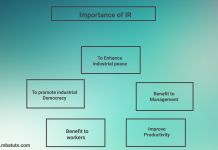-
Kelley Ford posted an update 8 hours, 52 minutes ago
Printed Circuit Boards (PCBs) are the foundation of modern electronic devices, playing a critical duty in powering and attaching the components that make our gizmos smarter and much more reliable. With the rapid improvement in technology, numerous types of PCBs have arised, each satisfying certain demands and applications. This essay checks out different sorts of PCBs, consisting of flexible printed circuits, rigid-flex PCBs, and High-Density Interconnect (HDI) boards, in addition to the gamers and procedures associated with their creation and assembly.
A circuit board, usually described as a PCB board or printed circuit board, is a vital component in electronic devices. It offers as a structure for placing and adjoining electronic parts through conductive paths etched from copper sheets. PCBs are indispensable to the performance of electronic gadgets, enabling the reliable flow of electricity between parts. Amongst the variations of PCBs, the flexible printed circuit board, likewise understood by its acronym, flex PCB, stands apart for its convenience and adaptability. These flexible circuits are made from products like polyimide or polyester, which enable them to flex and flex without breaking. This capability is very useful in applications where space is restricted or where the board needs to suit non-traditional shapes. As an example, in customer electronics, auto, and medical devices, flex PCBs are frequently used to guarantee trusted connections in spite of the structural challenges of the real estate style.
Heading towards a slightly a lot more intricate structure, rigid-flex PCBs combine the advantages of rigid and flexible circuit boards right into a single composite board. Rigid-flex PCBs can endure mechanical stress and anxiety better while keeping the electrical honesty essential for high-performance gadgets.
The PCB assembly procedure, be it for a basic circuit board or an innovative rigid-flex design, entails several phases to make sure the last item functions as intended. It begins with PCB fabrication, where the board’s layout is made. This is adhered to by the assembly phase, where elements are soldered onto the board. A focus on high quality and accuracy is vital, which is why several firms look in the direction of trusted PCB board assembly manufacturers to make sure that each solder joint and connection fulfills rigorous requirements. The procedure of PCB assembly has become significantly innovative, typically integrating automation to deal with complicated tasks.
Flex PCBs, as a result of their one-of-a-kind construct, need customized fabrication methods. Flex PCB fabrication includes producing the flexible base layer, adding conductive traces, and afterwards do with safety layers to secure versus environmental factors. This intricacy demands know-how, which is why it’s crucial to companion with well established flexible printed circuit manufacturers. Firms took part in flex circuit manufacturing require to have a robust understanding of material properties and assembly strategies to create reliable and durable flex circuits.
Custom printed circuit board solutions permit business to tailor the style of PCBs to meet details requirements, be it in terms of design, element placement, or board dimension. Collaborating with a flex PCB manufacturer who can offer custom services can lead to enhanced product designs and possibly lower prices.
In situations where high-density combination is critical, HDI printed circuit boards action in as the service. High-Density Interconnect PCBs have actually increased to prestige due to their ability to pack more functionality into a smaller sized footprint. This is accomplished by utilizing finer traces and more intricate layering strategies, making HDI boards optimal for contemporary smart devices and wearable technology, where room is at a premium. This sophisticated manufacturing capacity guarantees that also one of the most complex designs can be implemented with accuracy.
PCB assembly solutions frequently highlight the geographical ease, with many looking for “PCB assembly near me” to reduce lead times and boost communication. Localized solutions can offer the convenience of straight contact and perhaps faster turnaround times, which is critical for quick prototyping and advancement cycles in today’s busy tech globe.
The importance of PCBs in the RF domain is likewise noteworthy. RF boards, designed for taking care of radio frequency signals, need precise layout because of the level of sensitivity and precision needed in RF applications. Becoming part of the telecommunications and transmitting markets, RF PCBs have to handle signal stability thoroughly to ensure smooth data transmission and function.
Within the ambit of PCB modern technology, rigid-flex and flexrigid PCBs stand as testament to the innovation permitting electronics to come to be significantly smarter and small without compromising efficiency. As technology developments, the push towards integrating extra performance into smaller form aspects will certainly remain to drive the development in PCB styles.
The landscape of contemporary electronic devices is unimaginable without the intricate network of interconnections that PCBs supply. Whether it is custom board layouts that call for a fragile touch or the durable demands of an RF board, PCB modern technology is main to electronic technology. As markets continue to require smaller sized, more reliable, and versatile digital gadgets, the function of PCBs, specifically those that are flexible or integrate high-density integration, will only grow in significance.
The sector is sustained by an ecosystem of manufacturers, vendors, and professionals in circuit board assembly. The similarity a flex circuit manufacturer or a supplier for custom printed circuits play an important duty in bridging style visions with useful truths. Their payments ensure that innovations in electronic devices can keep pace with the watchword of the future: make sure every square millimeter of digital property is maximized to its greatest.
In summary, the world of PCBs– extending typical rigid types to advanced flexible circuits– is a complicated yet fascinating domain name that underpins a lot of our everyday innovation dependence. From manufacturing to assembly and advancement in procedures and products, the evolution of PCBs bears witness to the continuous march of technical progress. As we continue to push the limits of what electronics can do, the value of collaborating with experienced PCB board manufacturers, embracing the versatility of flex circuits, and understanding the complexities of HDI structures becomes increasingly crucial. pcb flex rigid of performance, dependability, and technology in PCB systems will, definitely, continue to steer the future of electronic style and manufacture.
Home Activity












